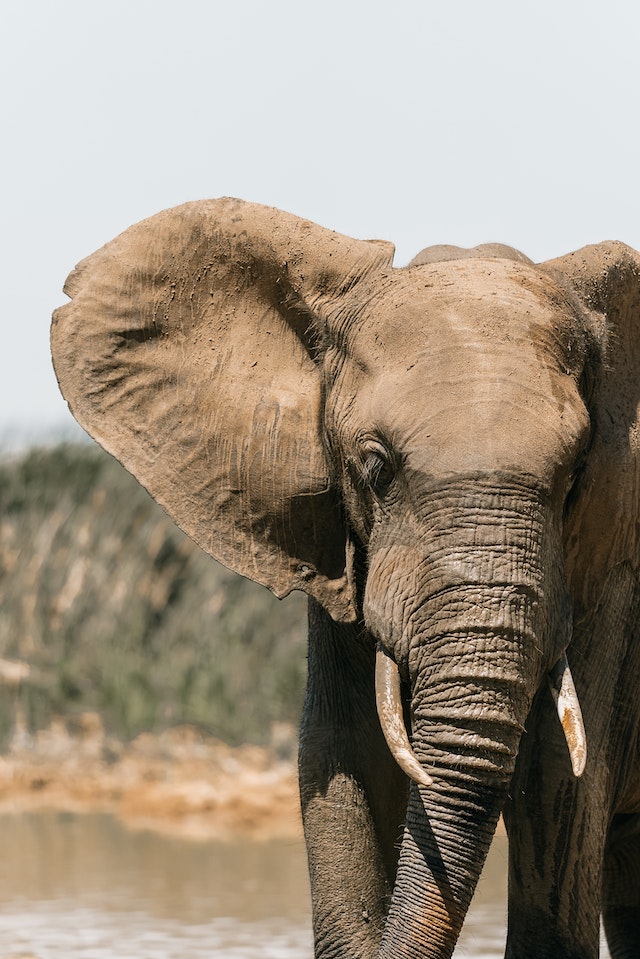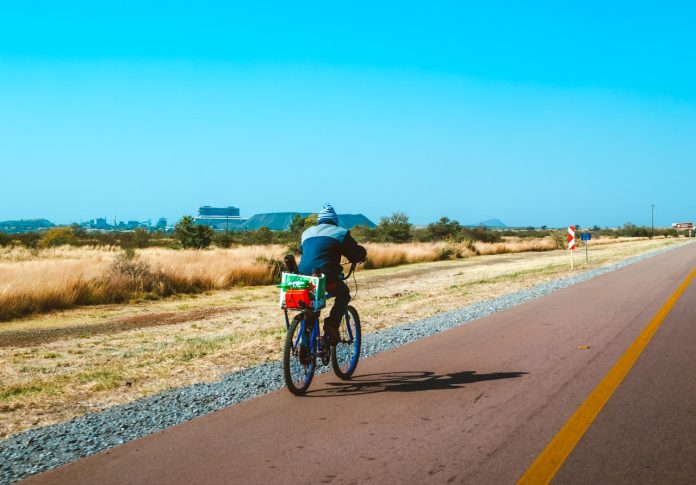We bring to you the full list of the 9 Provinces in South Africa and their capital cities. As South Africa is a land of stunning landscapes, rich cultural diversity, and a complex history, it is a nation that captivates the imagination of travelers and scholars alike.
Nestled at the southern tip of the African continent, it is a country where ancient traditions seamlessly blend with modern aspirations. One fascinating aspect of this nation is its division into nine distinct provinces, each with its unique charm and identity.
This exploration will uncover the list of the 9 Provinces in South Africa and their respective Capital Cities. We will offer a glimpse into the geographic and cultural tapestry that makes this rainbow nation genuinely extraordinary.
There are many educational institutions in South Africa, from primary, to high schools, and Universities. You should check out our list of the cheapest universities in South Africa.
South Africa’s provinces are a testament to the nation’s diversity and resilience, from the vibrant metropolis of Gauteng to the tranquil beauty of the Eastern Cape.

Join me on this enlightening voyage through a nation that continues to shape its destiny while honoring its roots. But first, what is a province?
What is a Province?
A province is a geographical and administrative region within a country or a nation. Provinces are typically smaller subdivisions of a country, each with its own government or local authority responsible for certain aspects of governance, such as education, healthcare, and transportation, within its defined boundaries.
The term “province” is commonly used in many countries to organize and administer regions for administrative purposes. The specific powers and responsibilities of provinces can vary from one country to another, depending on the country’s governmental structure and legal framework.
The 9 Provinces and Their Capital Cities?
The table below shows the nine Provinces in South Africa ( or states in South Africa), their capital, and motto:
| S.No | Province | Capital | Motto |
| 1. | Free State | Bloemfontein | Katleho ka kopano (Success through unity) |
| 2. | Eastern Cape | Bhisho | Development through Unity |
| 3. | Gauteng | Johannesburg | Unity in Diversity |
| 4. | KwaZulu-Natal | Pietermaritzburg | Masisikume Sakhe (let’s stand up and build) |
| 5. | Limpopo | Polokwane | Peace, Unity and Prosperity |
| 6. | Mpumalanga | Mbombela | Omnia labor vincit (Labour will conquer all) |
| 7. | North West | Mahikeng | Kagiso le Tswelelopele (Peace and Prosperity) |
| 8. | Northern Cape | Kimberley | Strive for a better life |
| 9. | Western Cape | Cape Town | SPES Bona (good hope) |
The Biggest Province in South Africa
The biggest province in South Africa in terms of land area is the Northern Cape. Let’s delve into more detail about the Northern Cape and what makes it the largest province in the country:
- Geographical Size:
Of all the provinces in South Africa, The Northern Cape is in the northwestern part of South Africa and covers a vast land area of approximately 372,889 square kilometers (around 143,973 square miles). This extensive size makes it the largest of South Africa’s nine provinces.
- Landscape:
The province is known for its diverse and often stark landscapes, contributing to its significant size. It includes arid desert regions, semi-arid savannas, mountain ranges, and the distinctive Kalahari Desert in the eastern part. The Orange River, one of South Africa’s major rivers, flows through the province, providing a lifeline for agriculture and supporting various ecosystems.
- Climate:
Due to its vast size and diverse geography, the Northern Cape experiences a range of climates. The western coastal areas have a Mediterranean climate, while the inland regions tend to be dry, with hot summers and cold winters. This climate variation results from the province’s size and proximity to different bodies of water.
- Economy:
The Northern Cape’s economy is primarily driven by mining and agriculture. The province is rich in mineral resources, including diamonds, copper, zinc, and iron ore.
The mining sector is crucial to the province’s economy, providing employment and contributing to South Africa’s overall mineral wealth. Despite the arid conditions, agriculture is sustained by irrigation from the Orange River and includes the cultivation of grapes, maize, and other crops.
- Tourism:
Thanks to its unique landscapes and attractions, tourism is also a growing industry in the Northern Cape.
The province is home to the Augrabies Falls National Park, the Kgalagadi Transfrontier Park (a vast wilderness area shared with Botswana), and the Richtersveld Cultural and Botanical Landscape, a UNESCO World Heritage Site. These natural wonders interest visitors in experiencing the province’s rugged beauty and rich cultural heritage.
- Population:
Despite its immense size, the Northern Cape has a relatively small population compared to other provinces in South Africa. The diverse population has various ethnic groups and languages spoken, including Afrikaans, Setswana, and IsiXhosa.
The Northern Cape is the largest province in South Africa, characterized by its expansive land area, diverse landscapes, mineral wealth, and unique tourist attractions. Its economic activities, including mining and agriculture, contribute significantly to the country’s economy despite its relatively low population density.
Related: The 11 Official Languages in South Africa
What is the smallest province in South Africa?
The smallest province in South Africa in terms of land area is Gauteng.
How Many Capital Cities Does South Africa Have?
South Africa has three capital cities:
- Cape Town: Serves as the legislative center and houses Parliament;
- Pretoria: Is the executive branch’s seat, where the Cabinet and President are based;
- Bloemfontein: Is the judicial branch’s center and home to the Supreme Court of Appeal.
Which Province in South Africa is the Poorest?
The Eastern Cape is the poorest province in South Africa, with a predominantly rural population of approximately 880,000 impoverished people. In contrast, Gauteng, the wealthiest province, offers the best job opportunities, with around 610,000 people living in poverty.
What are the nine provinces in South Africa?
Here is a list of the nine provinces in South Africa:
- Eastern Cape
- Free State
- Gauteng
- KwaZulu-Natal
- Limpopo
- Mpumalanga
- Northern Cape
- North West
- Western Cape

What Does State of Emergency Mean in South Africa?
In South Africa, a “state of emergency” is a legal declaration made by the President under the authority of the Constitution or specific legislation to address a national crisis or threat.
It grants the government extraordinary powers to maintain or restore law and order in the country. Here is a detailed explanation of what a state of emergency entails in South Africa:
1. Declaration: The President of South Africa can only declare a state of emergency. This declaration is made through an official proclamation published in the government gazette. It must specify the reasons for reporting the state of emergency and the geographical area to which it applies.
2. Reasons: A state of emergency can be declared for various reasons, including but not limited to:
- National security threats, such as terrorism or armed insurrection.
- Natural disasters, such as floods or earthquakes, significantly threaten the population.
- Public health crises, like a pandemic or widespread disease outbreak.
Other circumstances that seriously endanger the safety and stability of the country.
3. Extraordinary Powers: Once a state of emergency is declared, the government can exercise a range of extraordinary powers. These may include:
- Curfew: Imposing curfews to restrict movement during specified hours.
- Censorship: Controlling or censoring the media to prevent the spread of false information.
- Arrests and Detentions: Authorizing arrests and detentions without regular legal processes.
- Search and Seizure: Granting law enforcement agencies broader search and seizure powers.
- Control of Essential Services: Taking control of essential services, such as transportation and communication, to ensure their continued operation.
- Mobilization of Resources: Utilizing resources, including the military, to respond to the crisis effectively.
4. Parliamentary Oversight: Declaring a state of emergency is not an unlimited grant of power. It is subject to oversight by Parliament. Parliament must approve the declaration within a certain period (usually 21 days) after it is made. This ensures that the government’s exercise of emergency powers is scrutinized and justified.
5. Duration: A state of emergency is limited and can be renewed by Parliament if necessary. The Constitution stipulates that it can initially be in place for up to 21 days, with the possibility of extensions, but Parliament must also approve it.
6. Rights and Freedoms: While a state of emergency grants the government extraordinary powers, it does not suspend the Constitution or citizens’ fundamental rights and freedoms. These rights, such as the right to life and human dignity, remain protected, although they may be subject to some limitations to address the crisis.
In summary, a state of emergency in South Africa is a legal mechanism that allows the government to respond to exceptional crises or threats by temporarily assuming broader powers.
It is a measure designed to ensure the safety and stability of the nation while maintaining oversight by the elected representatives in Parliament and upholding fundamental rights and freedoms.
Related: Top 10 Best Online Schools in South Africa
What Are the Nine Provinces in South Africa (Summary)
South Africa has more than 60 million people, and did you know that the Transvaal and Orange Free State, which were originally Boer republics, as well as Natal and the Cape, which were formerly British possessions, made up South Africa’s four provinces prior to 1994.
Under British administration, these four states merged in 1910 to become the Union of South Africa. The Republic of South Africa was established here under apartheid in 1960.
In conclusion, today, South Africa’s nine provinces are:
- The Eastern Cape
- The Free State
- Gauteng
- KwaZulu-Natal
- Limpopo
- Mpumalanga
- The Northern Cape
- North West Cape
- Western Cape
Theses nine provinces represents a diverse and multifaceted nation. Each section has unique cultural, geographical, and economic characteristics, contributing to the country’s rich tapestry of diversity.
Whether it’s the bustling urban landscapes of Gauteng, the natural wonders of the Western Cape, or the historical significance of the Eastern Cape, these provinces collectively form the foundation of South Africa’s unity in diversity.
Understanding and appreciating the distinctiveness of each province is essential to comprehending the nation’s complex and vibrant identity.
More Topics:





